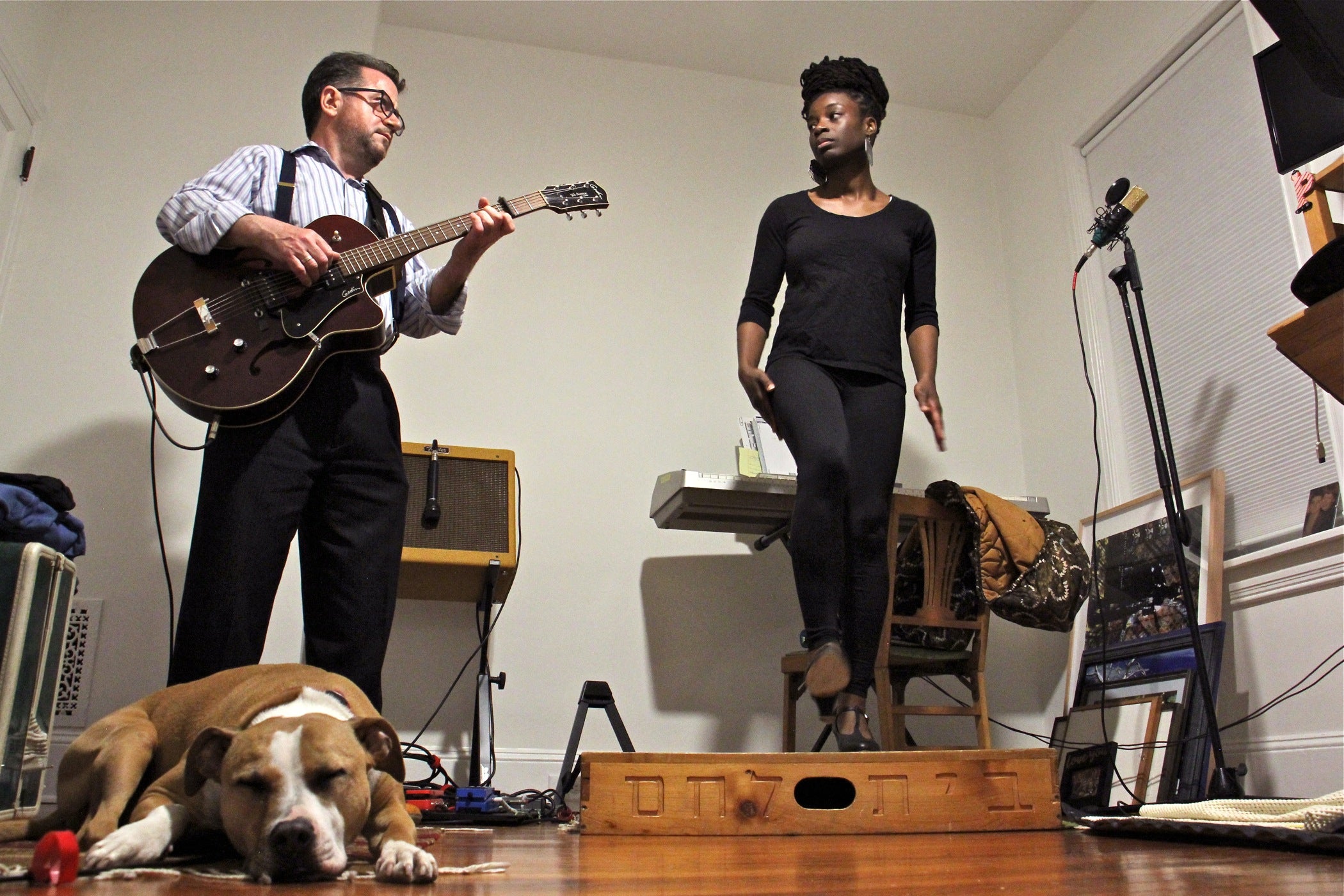Imparting the patterns of history and disaster repeating on Ruination Day
A Philadelphia artist takes cues from Gillian Welch and folk ballads to paint historic repetition.
Listen 3:34
Melinda Steffy's "Ruination Day" exhibit at the Crane Arts Building is a visual interpretation of the songs about three catastrophes that took place on April 14, the sinking of the Titanic, the Lincoln assassination, and a massive dust storm in the Midwest. (Emma Lee/WHYY)
When Melindy Steffy gave birth to her first child – a son – three years ago, it wasn’t easy. She was in labor most of April 14. The blessed event occurred on the 15th.
Coincidentally, that followed the pattern of the assassination of Abraham Lincoln in 1865 (shot on April 14, died in the early hours of April 15) and the sinking of the Titanic in 1912 (struck by an iceberg just before midnight on the 14th, sank just after 2 a.m. on the 15th).
“I like to think my son was not a disaster. His arrival was a joyous event,” said Steffy. “But there is that sense of delayed activity.”
April 14 is known as Ruination Day, a term coined by songwriter Gillian Welch who noticed that folk songs about the assassination of Lincoln, the sinking of the Titanic, and the Great Dust Storm that swept across Oklahoma and Texas in 1935 all specifically mention April 14 in the lyrics. Welch wrote her own song, “Ruination Day,” for her celebrated 2001 album “Time (The Revelator).”
“I knew ‘Ruination Day,’ and I knew ‘God Moves on the Water,’” said Steffy. “I had listened to them a million times and never thought about it.”
That is, until, her son was born.
A trained pianist and singer — with the Chestnut Street Singers chorus — Steffy is the executive director of a music nonprofit Live Connections. But her visual sensibility has turned her creative energies toward painting. She created a series of artworks called “Ruination Day,” now on view at the gallery Tiger Strikes Asteroid in the Crane Arts Building of Kensington.
Songs take shape as paintings
Her paintings are visual translations of the songs, stripped of lyrics. Steffy created a system to represent notes and rhythms with a grid of color blocks. The paintings are geometric abstractions, adhering to strict rules of representation.
“It’s a funny tension, because the system does things that I sometimes don’t like, and I have to figure out what to do about that,” said Steffy.
The exhibition is anchored by four large paintings, each a translation of a Ruination Day song: Blind Willie Johnson’s 1929 “God Moves on the Water”; Woody Guthrie’s 1940 “The Great Dust Storm”; the 19th-century folk ballad “Booth Killed Lincoln”; and the title song by Welch.
By putting music in a spatial plane, it’s possible to see its patterns of melody and rhythm — and where those patterns falter through bent notes and lyrical variation.
“It’s how something sticks in your brain. It’s how you pass something along to your family. I think human beings are built by repetition and routine,” said Steffy.
The last word of each song — represented by a colored square — is pulled out of the grid and given its own canvas, rendered in subtle variations of texture and color. While the grid represents a system, these final word paintings allow Steffy a more expressive hand.
“Repetition is what builds our lives, but nuance is what makes us human, and what gives us empathy for other people,” she said.
Commemorating Ruination Day
This Sunday — Ruination Day — Tiger Strikes Asteroid will host performances by Philadelphia folk-soul duo Bethlehem and Sad Patrick. Bethlehem Roberson sings and stomps percussion on a tarima box and by slapping her own body; Patrick Arkins plays electric guitar and writes songs.
For this gig they were asked to learn the four Ruination songs, and found each contained a little history lesson.

“People are still performing them. As a matter of fact, to get the vibe of the song, we watched a whole bunch of YouTube videos of people performing them,” said Arkins. “These are active history lessons.”
They are most fond of “God Moves on the Water,” a kind of spiritual that Blind Willie Johnson wrote about the Titanic to describe how people cope with disaster.
“The words that stick with me are, ‘God moves, God moves, God moves, and the people had to run and pray,’” said Roberson. “Out of all this stuff going on, people had to run and pray to gain a sense of comfort or security during these times that seem chaotic.”
Like many folks songs, it’s repetitive and it tells a story in a way that passes history down by word of mouth for generations. By highlighting the pattern of repetition in her artwork, rather than the specific storytelling lyrics, Steffy hopes to show that historic patterns never go away.
“The political tension of the Civil War, the lack of regulation that led to the Titanic sinking, and the environmental practices that caused the dust storms. They are still happening,” she said. “We still live in moments where we allow catastrophes to happen. They are not distant history. We still have this repetition.”
Ruination Day continues on display through April 27.
WHYY is your source for fact-based, in-depth journalism and information. As a nonprofit organization, we rely on financial support from readers like you. Please give today.





